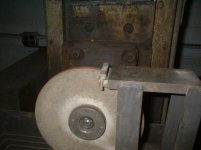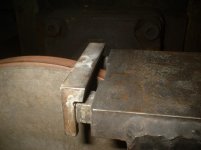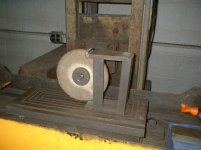Sorry, sort of home shop harry general curiousity:
Has anyone tried to sharpen used CBN inserts or is aware how its done?
I'd imagine its done with diamond wheel, probably flood coolant?
Grinding or honing the tiny k-land on the insert edge is another thing but if I recall correctly not even all professional CBN sharpening services do that.
Got bunch of used CBN inserts and was going to try em some day just for giggles.
Yes, I may have reground a few thousand CBN inserts with good success.
Diamond wheel just like carbide grinding but finer grit, harder wheels and it takes longer.
You need to be into 320-400 grit here if you t-land to remove the chips and 800-1200 if you want up-sharp.
Sometimes they have so little flank wear that you can just cut the t-land deeper. This is the easy way out if your flank wear is next to nothing. Hard turn people holding very tight finish sometimes have such tools.
Sometimes you grind the thickness and then the same. Or you just put a bigger rad on or reduce the size of the tool by taking some off the IC.
It's all hard to say but grind it like any carbide resharp and see what happens. A microscope or stereo-scope should be used to look at your results.
A 1/2 inch full top square (expensive) can be made into a .4688, then a .375, then into a .250 triangle but you need the right machines for this.
One could put a few sizes in between this if desired on the way down. This example is a very high production user and worked with what they built.
Most CBNs are not full tops so you run out of material and get only 2 downsizes depending on tip size and leg length.
The problem with any regrind scenario is pulling the tool before it chips out the top, once this happens....scrap.
I could post a picture of a very simple fixture used to put on normal sized t-lands on a regular surface grinder if you want to know how to do this.
Hones are put on with a abrasive brush and can also be done by hand.
So all shit above ignored and more to the your point MattiJ ...go for it and grind like a carbide tool.
And what the heck can I just call you Matt?..or Matti?? I don't think we have crossed paths here before so not sure how to address you.
I'm Bob, talk a lot of bullshit, not sure if if I know anything compared to others here.
Pleased to make your acquaintance and willing to help if I can in any way.
Bob
(before anyone gets too excited and e-pokes me.....inspection and setup time for your 1 or even 10 pieces across a couple of machines in my process)





